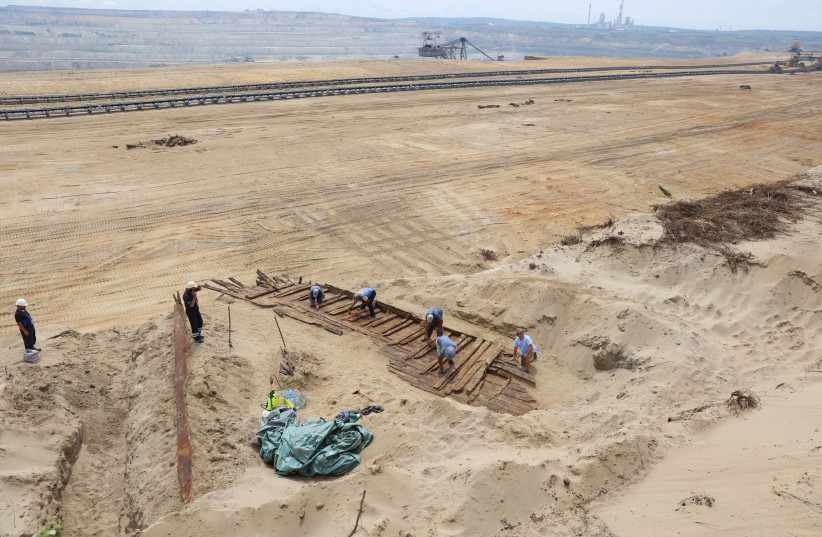Archaeologists in Serbia are painstakingly brushing sand and soil off the ancient woodwork of a Roman ship discovered by miners in a vast opencast coal quarry.
After an excavator at the Drmno mine uncovered some timber, experts from the site of a nearby former Roman settlement known as Viminacium rushed to try and preserve the skeleton of the ship, the second such discovery in the area since 2020.
The vessel was probably part of a river fleet serving the sprawling and highly-developed Roman city of 45,000 people which had a hippodrome, fortifications, a forum, a palace, temples, amphitheater, aqueducts, baths and workshops.
Lead archaeologist Miomir Korac said previous findings suggest the ship may date back as far as the 3rd or 4th century AD when Viminacium was the capital of the Roman province of Moesia Superior and had a port near a tributary of the Danube River.
"We may assume that this ship is Roman, but we are unsure of its exact age," he told Reuters at the dusty site hanging precariously above a vast open coal pit.

The wood was first sprayed with water and kept under a tarpaulin to prevent decay in the summer heat, Korac added.
Abandoned and sunken ships
Archaeologists believe the two ships and three canoes uncovered so far in the area either sank or were abandoned at the river bank.
The intention is to put the latest discovery on display with thousands of artifacts unearthed from Viminacium near the town of Kostolac, 70 km (45 miles) east of Belgrade.
Mladen Jovicic, who is part of the team working on the newly-discovered ship, said moving its 13-meter hull without breaking it would be tough.
"Our engineer friends ... will prepare a special structure that will be lifted by a crane, and ... the entire process of gradual conservation will follow," he said.
Excavations of Viminacium have been going on since 1882, but archaeologists estimate they have only scoured 5% of the site, which they say is 450 hectares - bigger than New York's Central Park - and unusual in not being buried under a modern city.
Discoveries so far include golden tiles, jade sculptures, mosaics and frescos, weapons, and remains of three mammoths.
